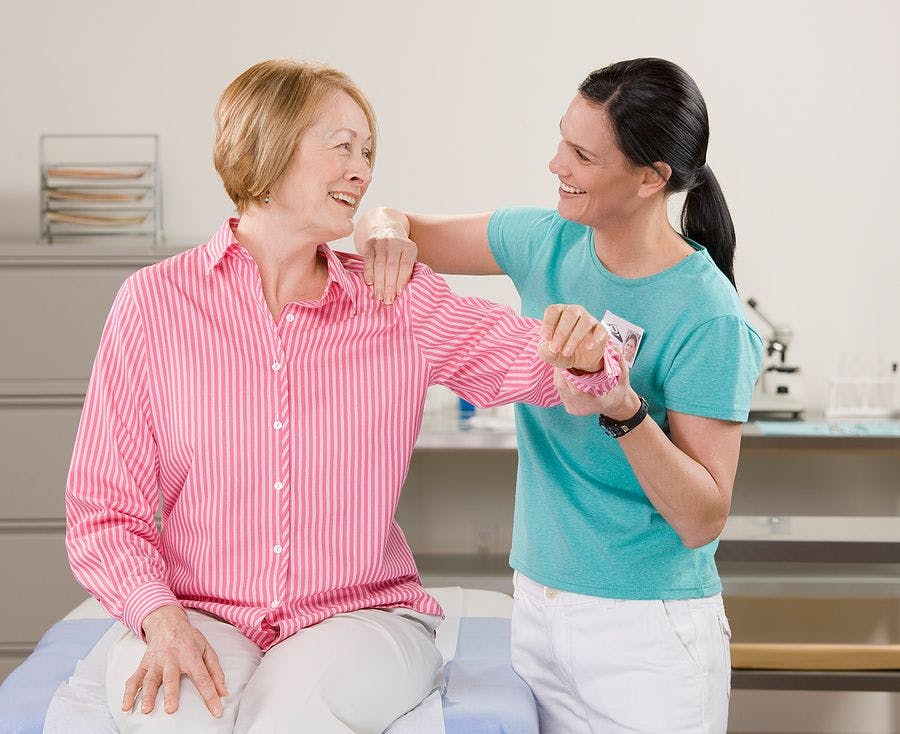Lymphedema Symptoms
The main symptom of lymphedema is swelling of the affected arm. The degree of swelling may vary. Some people may experience severe swelling (edema), with the affected arm being several inches larger than the other arm. Others will experience a milder form of edema, with the affected arm being slightly larger than the other arm. In addition to swelling of the affected arm, the following are the most common symptoms of lymphedema. However, each individual may experience symptoms differently. Symptoms may include:
- Feeling of fullness or tightness in the affected arm, chest or armpit area
- Aching or pain in the affected arm
- Swelling in the hand (may be evidenced by rings that no longer fit)
- Weakness in the affected arm
Lymphedema Causes
Lymphedema occurs as a result of a blockage in the lymphatic system. This is most often caused by a traumatic event, such as sports injuries or deep cuts and bruises, as an aftereffect of surgery or cancer treatment. More rarely, lymphedema can occur as birth defect or symptom of infection.
Lymphedema Prevention
People who have had surgery to remove lymph nodes in the armpit should be aware of those activities that put too much pressure on the affected arm. Protective measures to avoid injury and infection include:
- Maintaining Proper Hygiene
- Clean the skin of the affected arm daily and apply lotion. When drying the arm, be gentle but thorough.
- Take proper care of the fingernails and avoid cutting cuticles.
- Clean all cuts with soap and water, and then apply antibacterial ointment and a sterile dressing.
- Staying Fit
- Do exercises regularly to improve drainage, but first consult with your doctor or physical therapist.
- Eat a well-balanced, low-sodium diet.
- Keep the arm elevated when possible.
- Taking Precaution with Everyday Activities
- Protect your fingers from needle pricks and sharp objects. Use a thimble when sewing.
- Avoid vigorous, repetitive movements against resistance, such as scrubbing, pulling or pushing, with the affected arm.
- Avoid sunburns and other burns to the affected arm.
- Use an electric shaver when shaving underarms.
- Wearing the Right Attire
- Wear gloves when gardening and when using strong household detergents.
- Do not wear nightgowns or clothing with elastic cuffs.
- Carry your handbag or heavy packages in the unaffected arm.
- Speaking Up at Your Doctor’s Office
- Make sure that all injections are given and blood tests are drawn in the unaffected arm.
- If at all possible, have all blood pressure tests done on the unaffected arm.
- Avoid extreme hot or cold temperatures on the affected arm, such as heating pads or ice packs.
- Notify your doctor immediately of any signs of infection, such as redness, pain, heat, increased swelling or fever.
Talk with your doctor about what you can do to try to prevent lymphedema from happening to you. If lymphedema does develop, let your doctor know right away. There are things you can do to try to keep it from getting worse.

